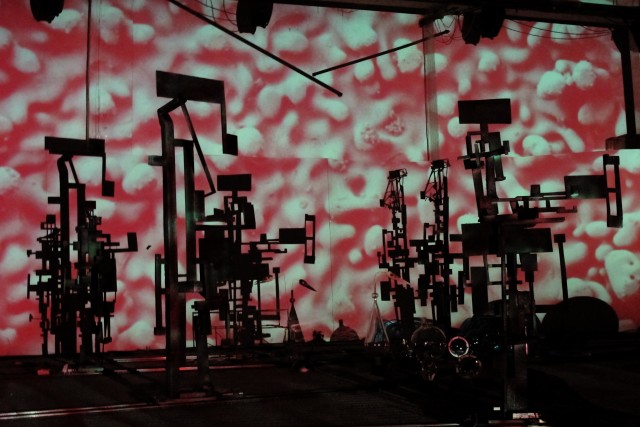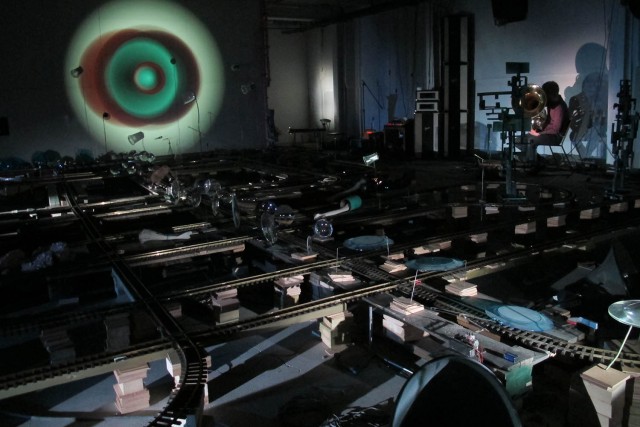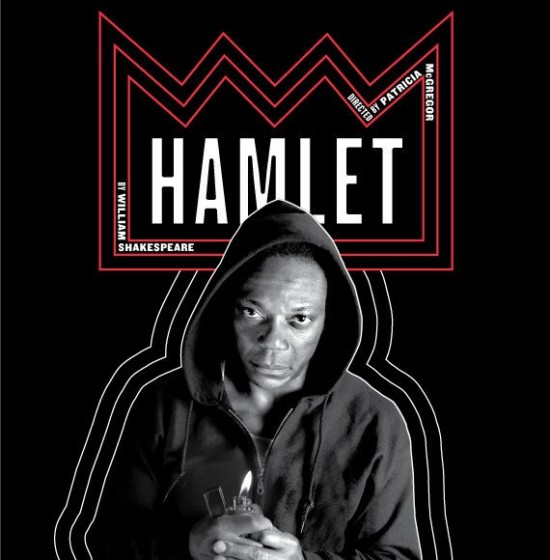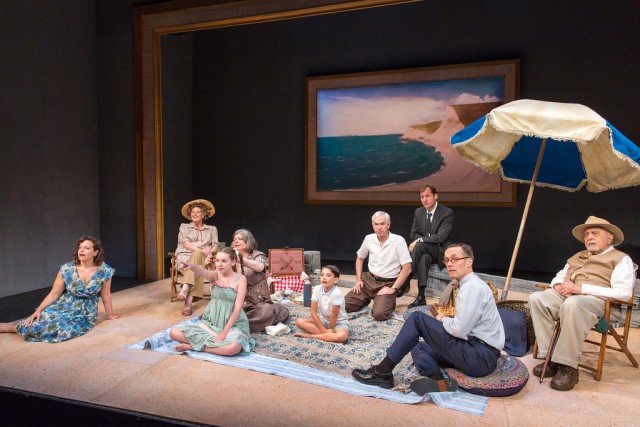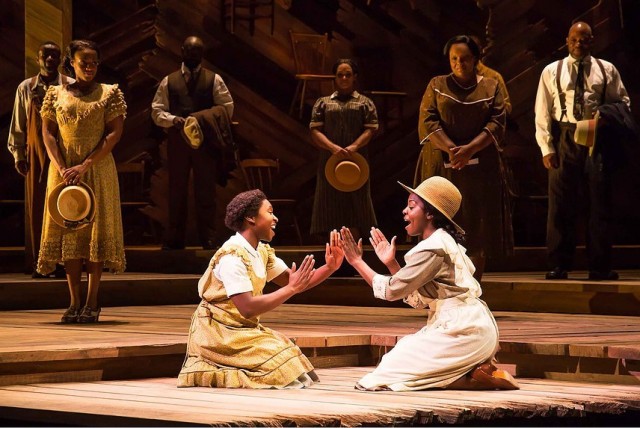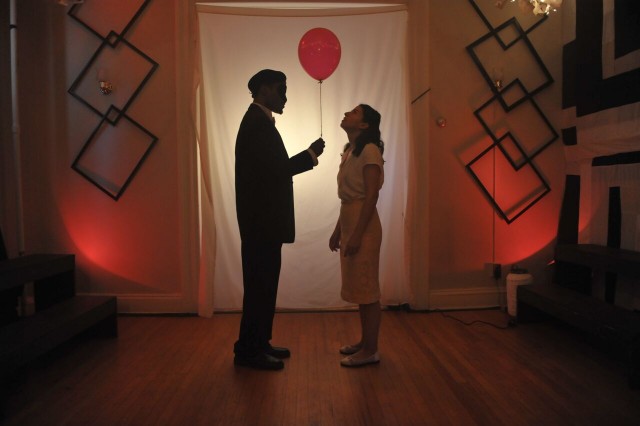
Georgette Magritte (Anya Krawcheck) receives a balloon from Fantomas (Danny Wilfred) in THE ENCHANTED REALM OF RENE MAGRITTE (Al Rodriguez Photography)
A JOURNEY THROUGH THE MIND OF THE SURREALIST PAINTER
Governors Island
Nolan Park House 17
Friday, Saturday, and Sunday through September 25 (except 9/9), $15
www.exquisitecorpsecompany.com
Brooklyn-based Exquisite Corpse follows up last summer’s Secession 2015, which took place in House 17 in Nolan Park on Governors Island and told the story of several artists and their muses in early twentieth-century Vienna, with The Enchanted Realm of Rene Magritte, set in the same building but now following the tempestuous relationship between Belgian surrealist painter Rene Magritte (Max Henry Schloner) and his wife and muse, Georgette (Anya Krawcheck). The play features ten vignettes, each written by one of eight writers (T. Adamson, Blake Bishton, Simon de Carvalho, Eric Marlin, Matthew Minnicino, Ran Xia, Emily Zemba, and Laura Zlatos), and is set in various rooms featuring Magritte-inspired designs. Forget about the silly, unnecessary frame story in which an annoying Realtor is trying to sell Magritte’s house and instead let yourself get swept up in the surreal love story between Rene and Georgette, from their first meeting, when he was fifteen and she was thirteen, through their later courtship and blatant infidelities. Following his father’s death, Rene is deciding whether to sell the house; the oddball Mr. Fish (Lee Collins) is desperate to buy it, but Rene’s deceased mother, Regina (company producing director Blaine O’Leary), a former milliner, has emerged from the river where she drowned herself years before to return to her son, begging him not to part with the home. After a disappointed Mr. Fish exits, Rene leads approximately fifteen guests on a tour of the house, each room relating to a piece of his personal past.
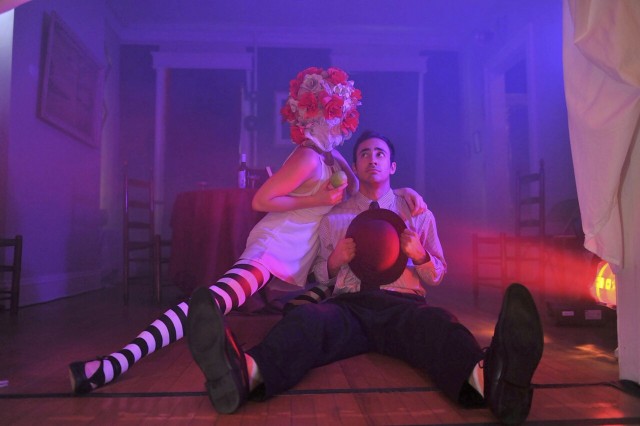
Rene Magritte (Max Henry Schloner) gets down with new friend Sheila Legge (Blaine O’Leary) in THE ENCHANTED REALM OF RENE MAGRITTE (Al Rodriguez Photography)
In the parlor, Fantomas features no dialogue, instead relying on shadow puppets, masked dancers, WWII sound effects, Paul Simon’s “Rene and Georgette Magritte with Their Dog after the War,” and a red balloon to poetically show the couple’s relationship blossoming. In The Surrealist Phantom, Rene introduces Georgette and Paul (choreographer Danny Wilfred), his best friend, to Sheila Legge (O’Leary,), his new girlfriend. For Out of the River, Regina scampers up and down steps, sharing her deepest thoughts with the audience. Day Trip is set in the sun room, where Georgette and Paul are at the beach, talking about their affair. The costumes, dialogue, and design of each room boast little Magritte-like flourishes referencing his paintings, from intersecting empty frames to fish, from an apple to a pipe, from a bowler hat to masks and a tree. Not all of it makes sense; you’ll be scratching your head a lot, trying to figure out just what is happening, but director and creator Tess Howsam maintains a relatively smooth flow from scene to scene. Schloner plays Magritte with a soft-spoken sense of wonder, the artist’s mind always wandering, his words flowing like one of his surreal paintings. “I worry that one day I will look out the window and, instead of the hill and the river below, I will see just a big wall of grey, translucent and covered in scales, like the belly of a giant trout, blocking out everything else,” he says. “So I’ve been keeping the blinds closed, because I never know when I might see the fish instead of the river.” The excellent O’Leary is intense as Regina and playful as the limber Sheila. Krawcheck is a revelation as the dedicated but confused Georgette, giving a tour-de-force performance that should soon have her busting out of the Nolan Park house and into bigger digs. She commands each scene she’s in with a sweetly infectious confidence and a natural artistic grace that is a delight to watch. The ninety-minute show continues September 10-11, 16-18, and 23-25; art lovers might also want to check out the ninth annual Governors Island Art Fair, which takes place in several houses along Colonels Row as well as at Fort Jay and Castle Williams.
